LEDGER SLABS
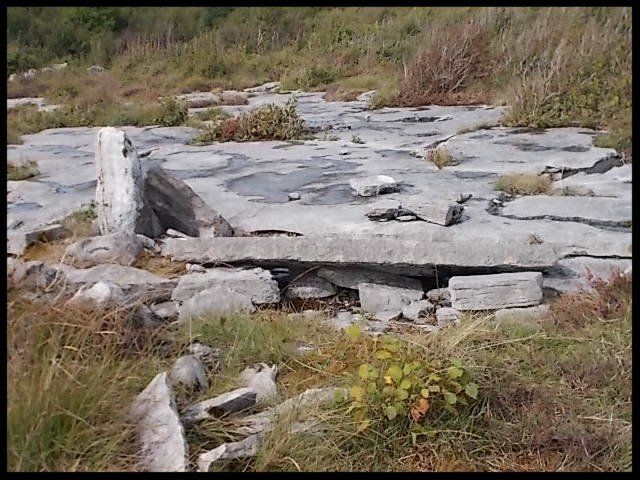
There is an “old grave-making site“ marked in the townland of Termon (Carran) on Tim Robinson’s map of the Burren. The site is a few hundred metres south of Temple Cronan, an Early Medieval monastic site. Four “ledger” grave slabs are still evident on site today.
A ledger slab is an inscribed stone slab usually laid into the floor
of a church or out on the graveyard to mark the burial place of a deceased person. The term "ledger" derives from the German word legen
,
meaning to lie.
Over 250,000 such ledger stones survive in
England and Wales according to the Ledgerstones Survey of England & Wales. In England and Wales, they are dated mostly
from the late seventeenth to the late eighteenth centuries, after which
period they are rarer. The burial tradition is associated with the middle classes and even higher up "echelons".
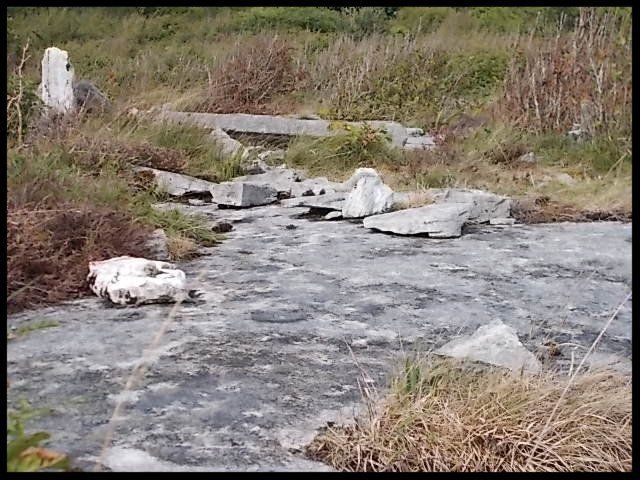
The general
outline is cut using a plug and feathers. The plug is an iron punch and the
feathers are wedges which act as sleeves to stop the plugs from getting jammed
in the stone. A hole is first of all made using a jumper. The feathers are then
dropped in and the plug ,which is larger than the hole, is hammered with a
sledge.
A singing sound indicated that the stone was about to crack. It would have been
important to hammer each plug in turn and to maintain the same pressure across
the line of stone to be cut. If one hammered at one point more than another,
the stone would break off at this point and be useless.
The prised rough slab was then mounted onto a platform of smaller stones for ease of cutting and dressing by the mason. Cutting and dressing is done in order to shape stone in to its desired form i.e. rectangular in the case of the ledger slabs. The work was ascribed either to a local family of masons or to itinerant stone-cutters who travelled the countryside doing jobs of this nature.
The slab was subsequently inscribed, (with detail of the deceased), and decorated. Inscription and decoration took place at a workshop or the cemetery itself.The decoration consisted of quarter circles in the slab corners, rows of zig-zags or lozenges at the edges and the IHS ( Iesus Hominum Salvator ) monogram.
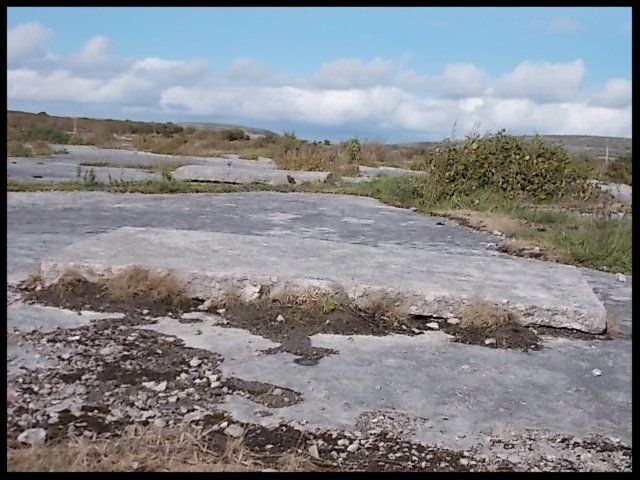
The slabs were probably moved using a series of rollers for short journeys and a sleigh or frame for long journeys. They could simply be pulled with a rope trace using a horse. A rope trace is one of two, or more, ropes by which a carriage or wagon, or the like, is drawn by a harness horse or other draft animal
Tim Robinson writes of the slabs in the Iaráirne graveyard on Inis Mór. The slabs features in the Bones of the Sands essay in one of Robinson's two Inis Mór books, Stones of Aran . As the transport of the heavy slabs was tough and perilous, Robinson states that a quart of poitín, (a traditional, distilled and illicit Irish spirit), was provided to the transport team to “fuel” the work. He points out that the Aran Island slabs are also evident in some of the graveyards of coastal South Connemara on the mainland.
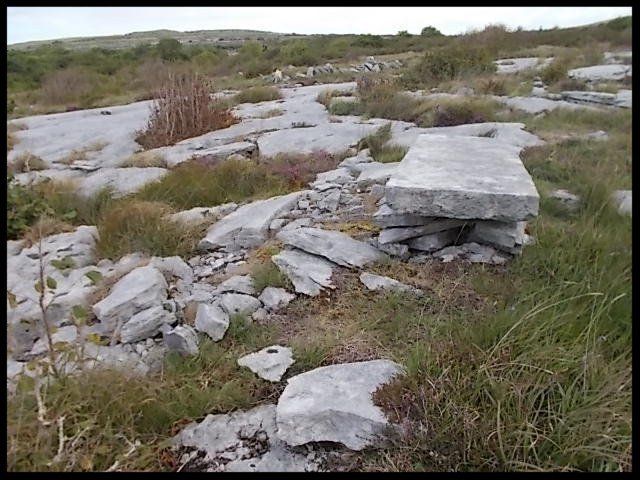
Two of the slabs at the Carran site are elevated on pedestals of smaller stones for ease of working by the mason. A third slab appears as if it was in the process of being removed from the pedestals and the fourth one is lying on the ground. All four are in a finished state and seem ready for transport. Pieces of cut-away stone are evident on site as well as an indentation in the bedrock from which one of the slabs was cut. The circumstances in which the site was abandoned are unclear.
The intrigue is heightened by the fact that there are another couple of slabs a few hundred metres south of the site which lie abandoned on limestone pavement. The latter slabs were almost certainly in transit to the cemetery. The nearest old graveyards are Glencolmcille, (about 4 kilometres east), and Carran (circa 8 kilomteres west). The Termon slab site was almost certainly chosen for the smoothness of its limestone pavement.
The whole operation was very labour-intensive. Moreover, the lettering becomes faint over time with weathering. For these reasons, recumbent slabs fell in to disuse in Ireland in the 19th century. The wealthier Irish began to opt for nationalistic Celtic Cross headstones in the wider context of the Celtic Revival and the drive for self-determination. Imported black or white marble head stones are most popular today .
Robinson refers to the slabs as being “ponderous, grey and very dignified”. They are physical evidence of ingenious use of local materials, high quality craftsmanship and very hard labour in a not too distant past.
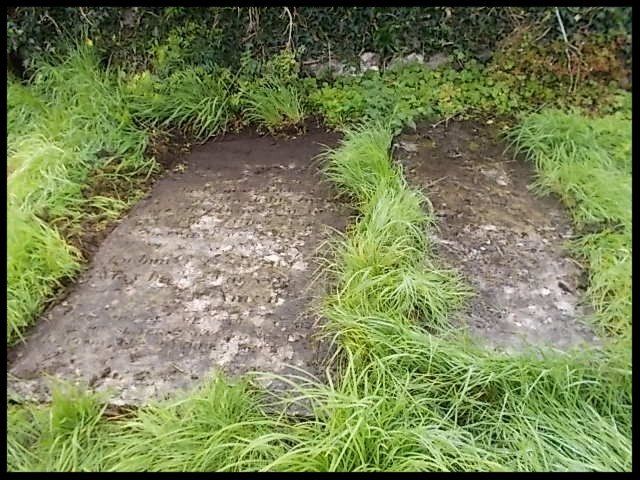
BIBLIOGRAPHY
Stones of Aran : Pilgrimage
.
Tim Robinson. New York Review
of Books. 1986 .
The Burren. A two-inch map of the
uplands of north-west Clare.
Folding Landscapes. 1977.
BUÍOCHAS/THANKS
Thanks to the
outstanding East Galway archaeologist Christy Cunniffe for helping me to
understand the ledger slab. Christy’s Facebook page is a treasure of
archaeological information.



